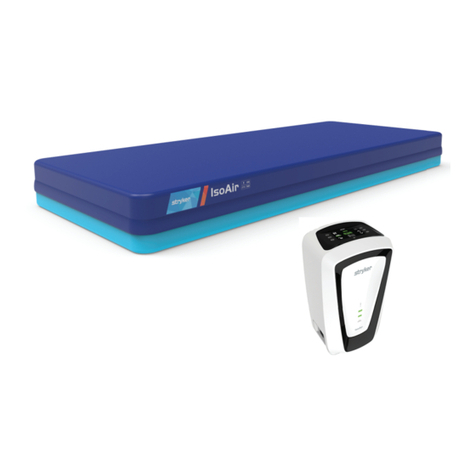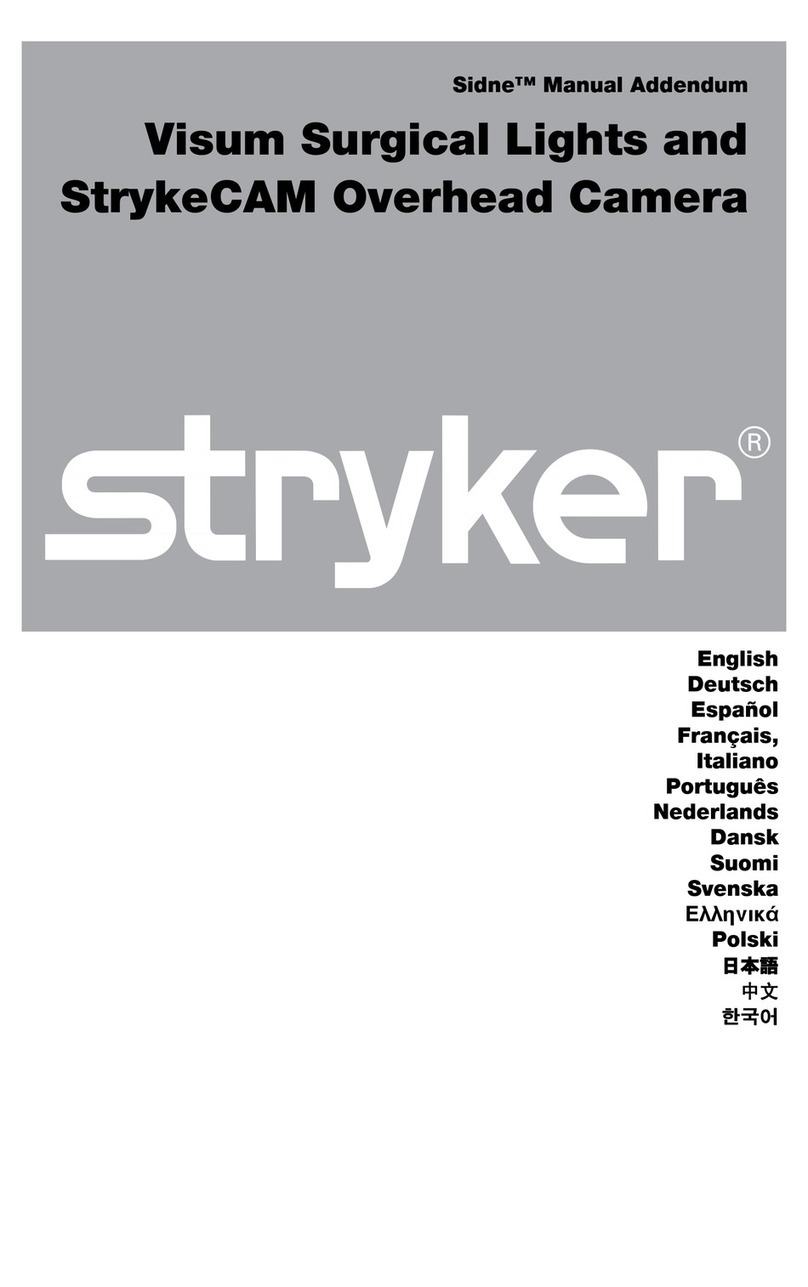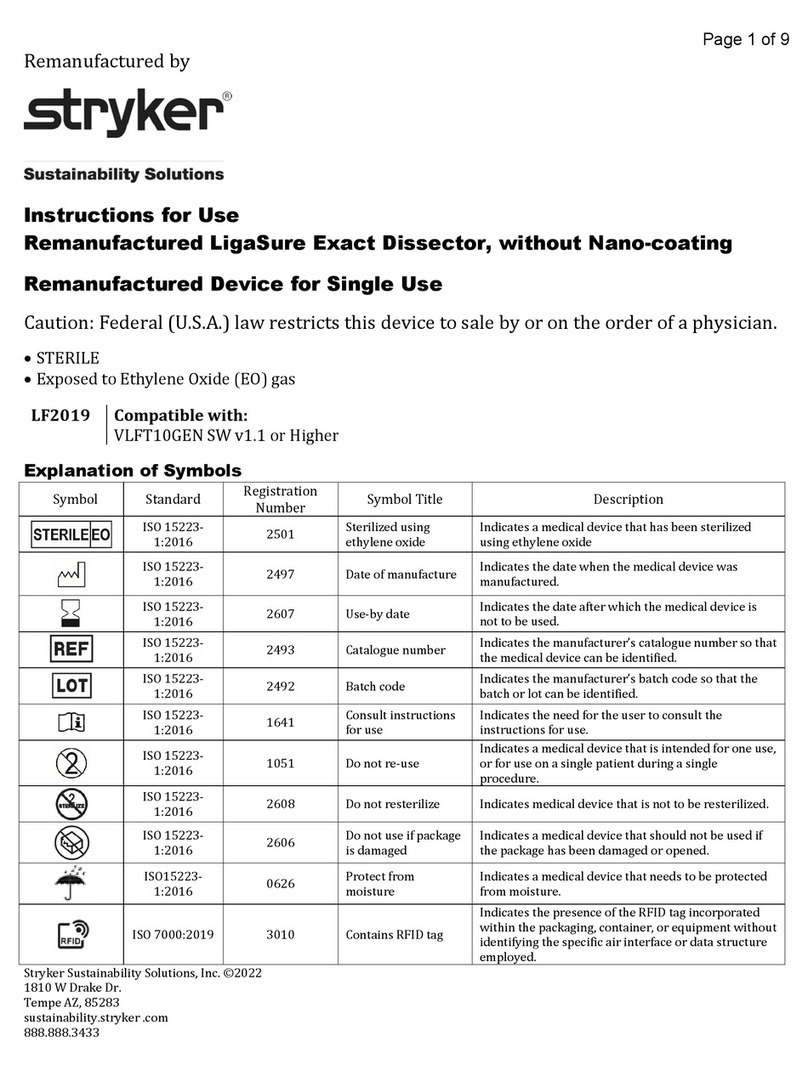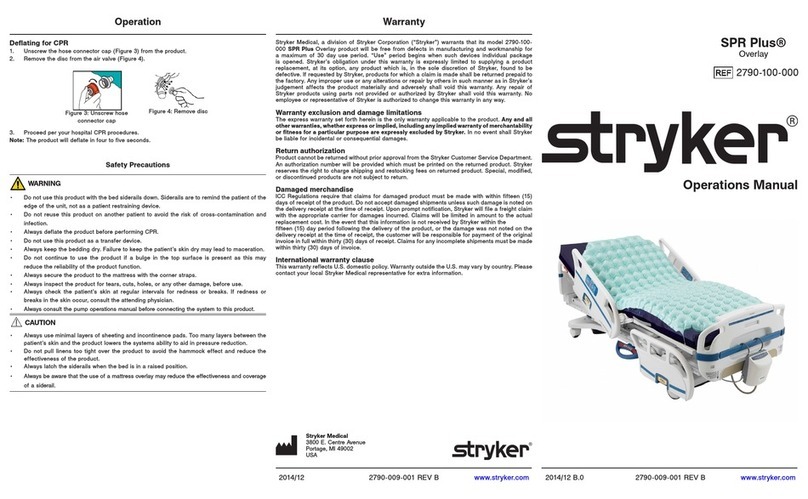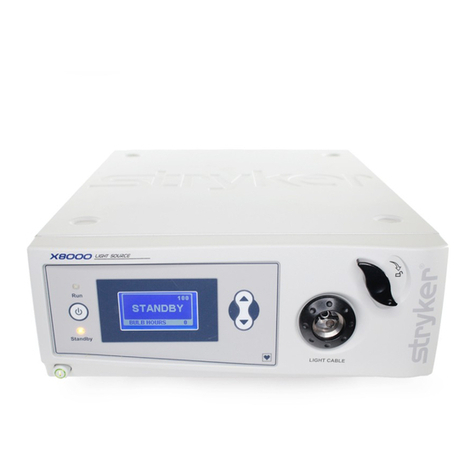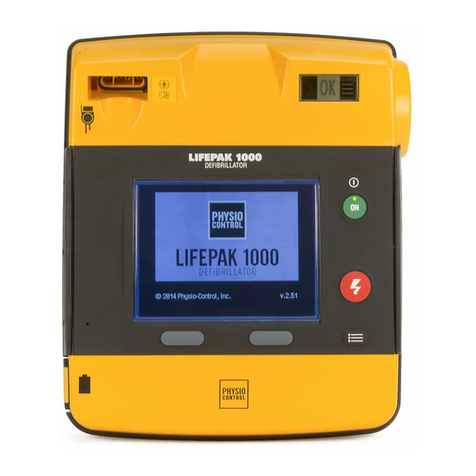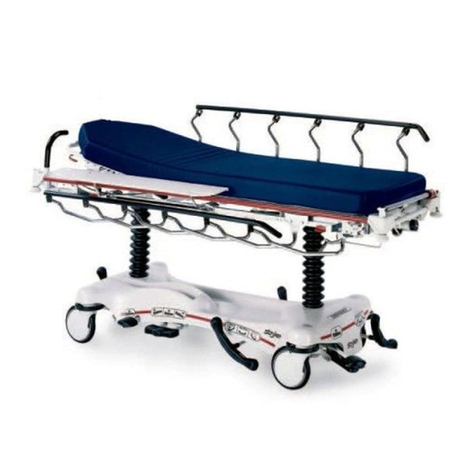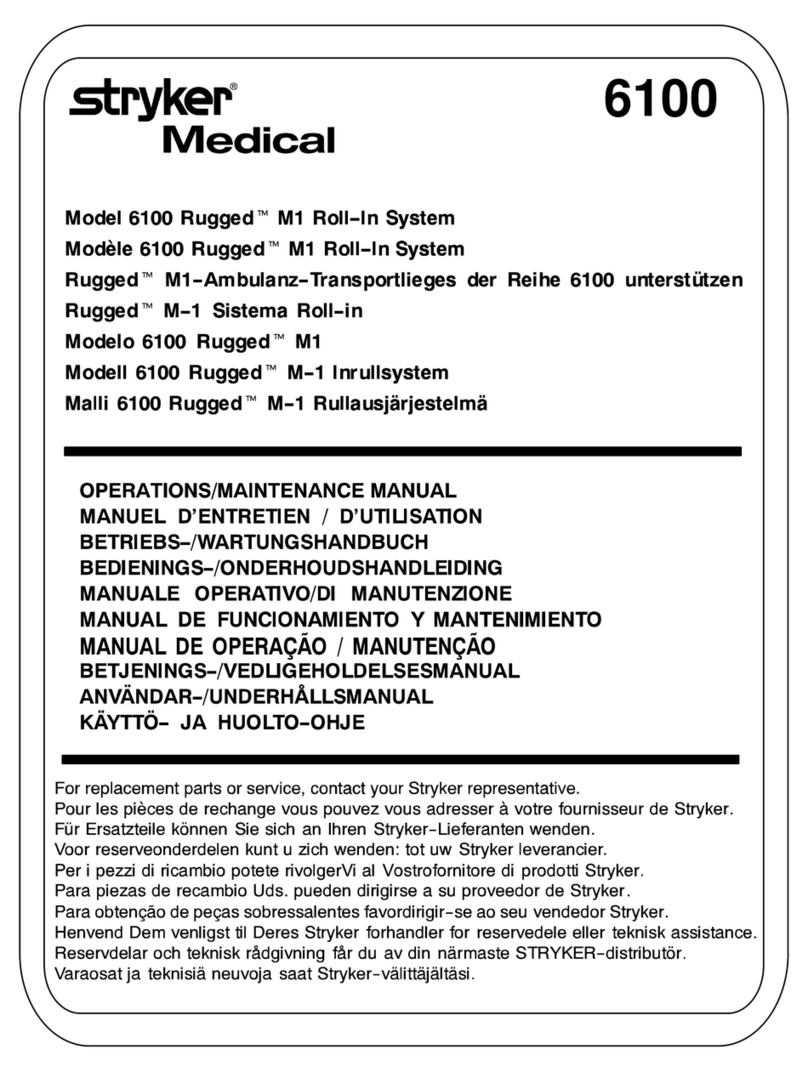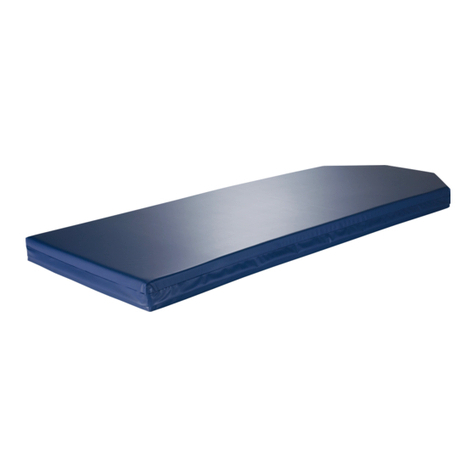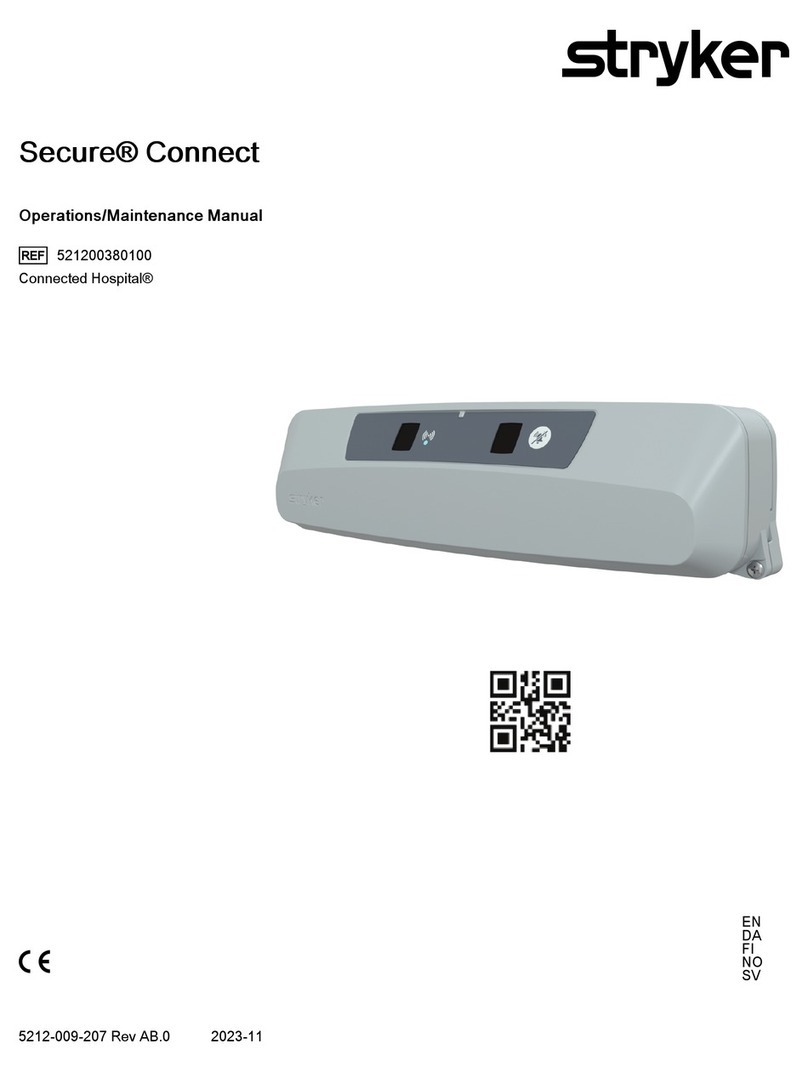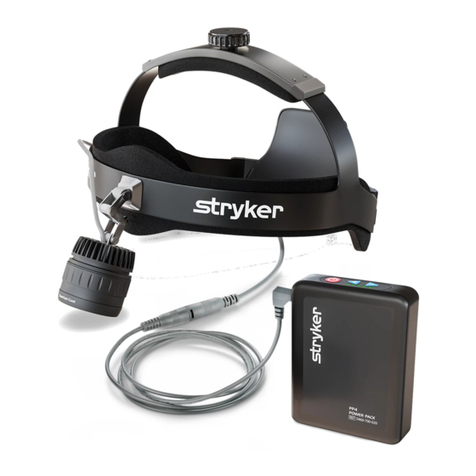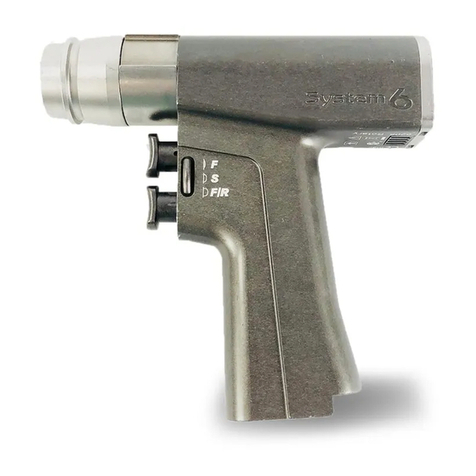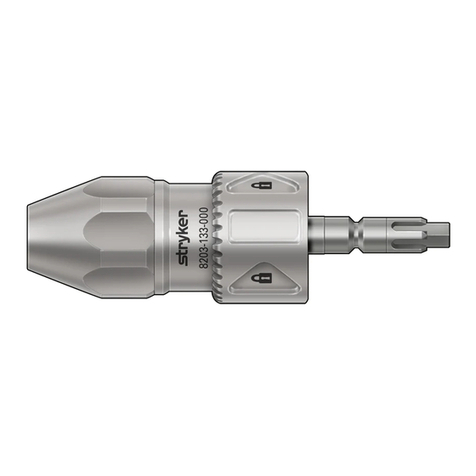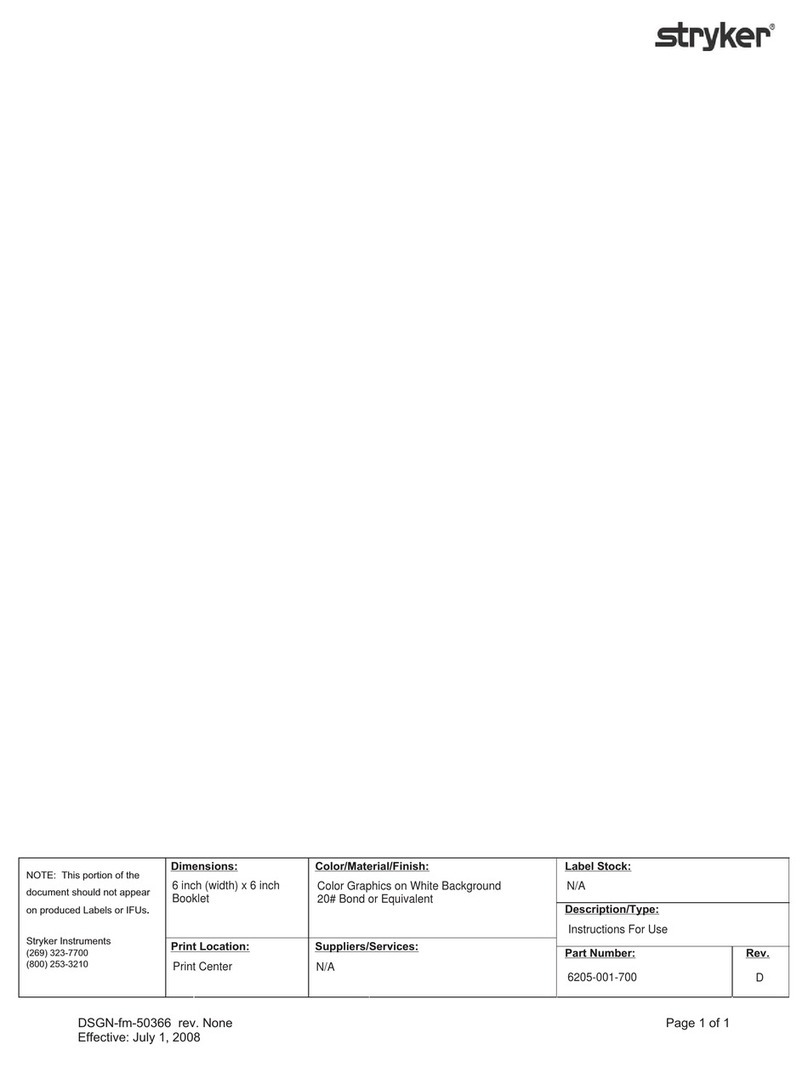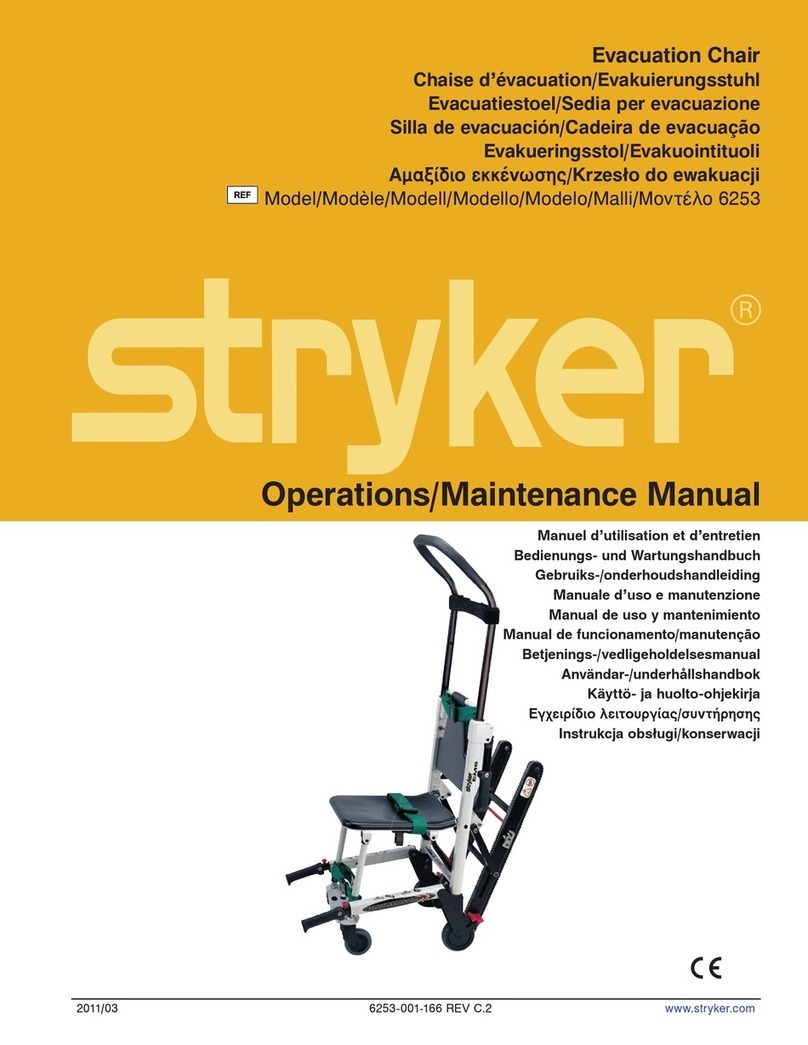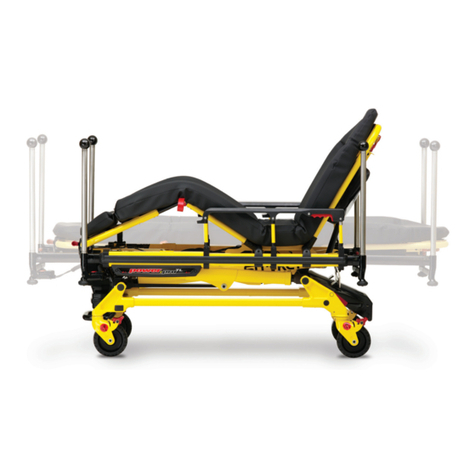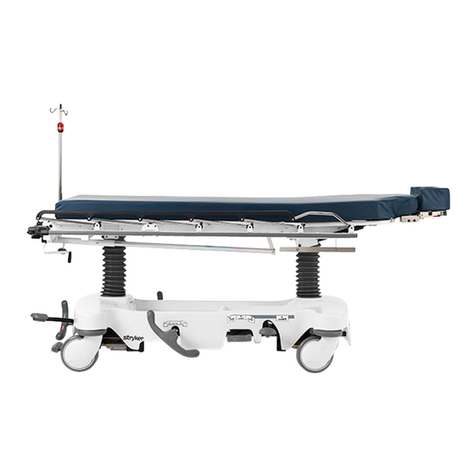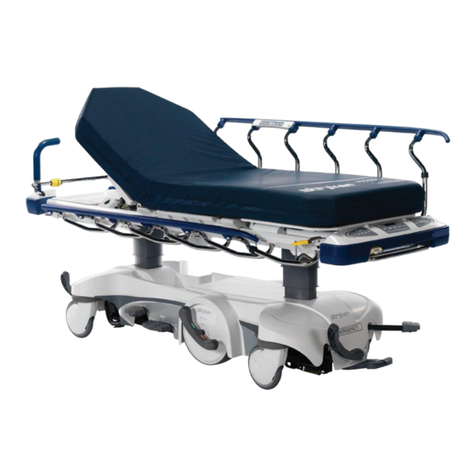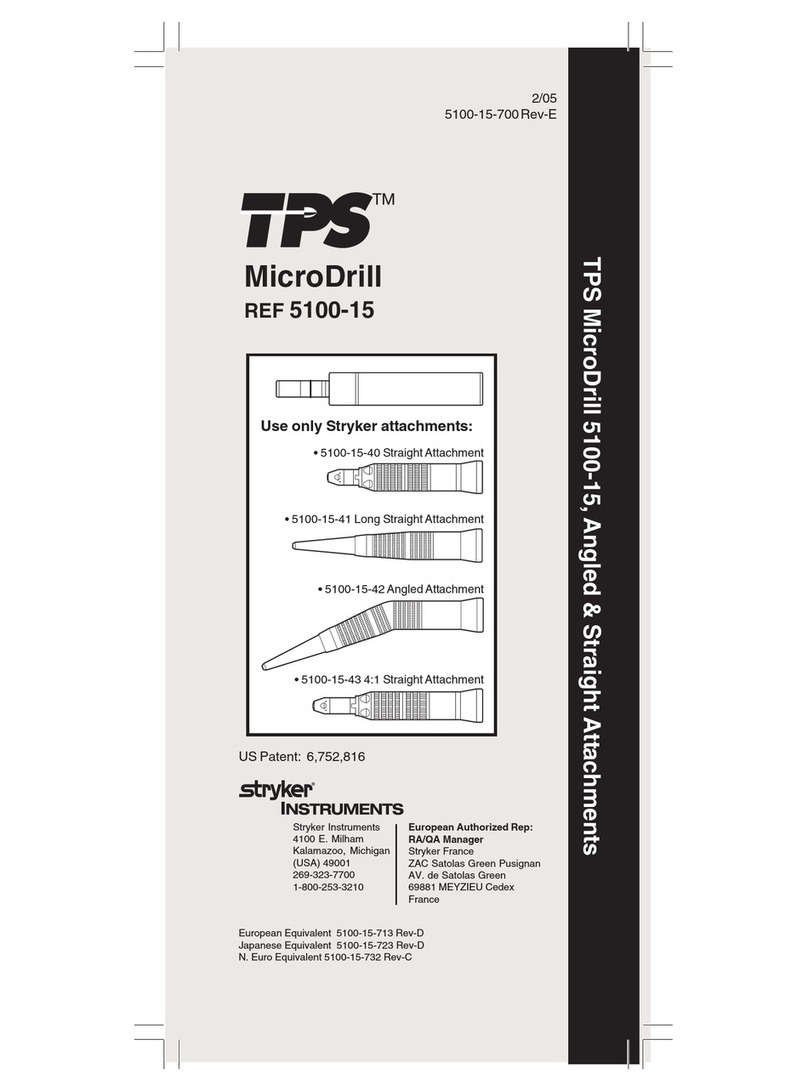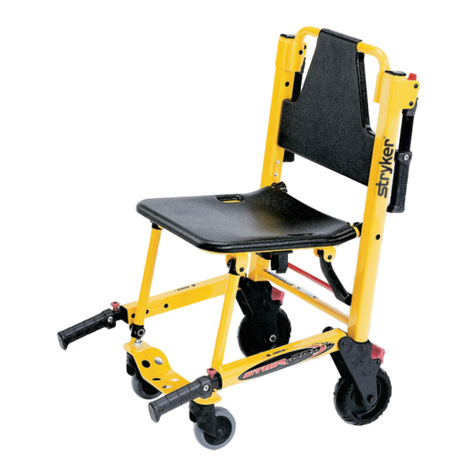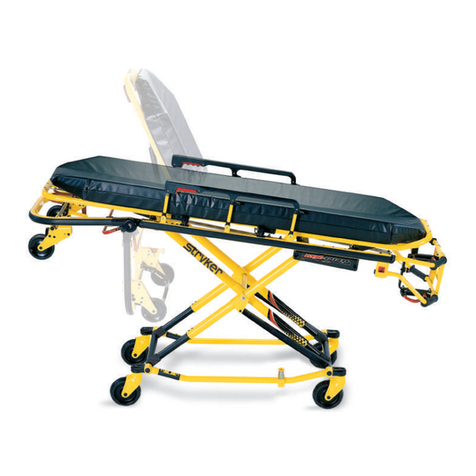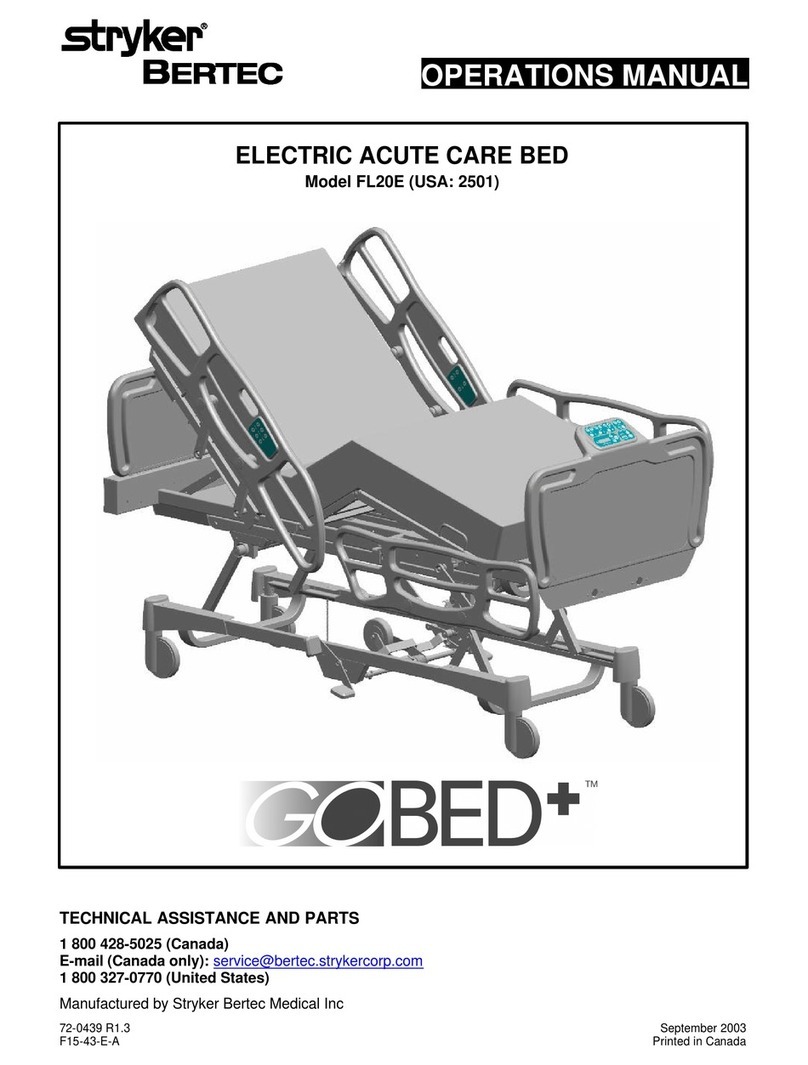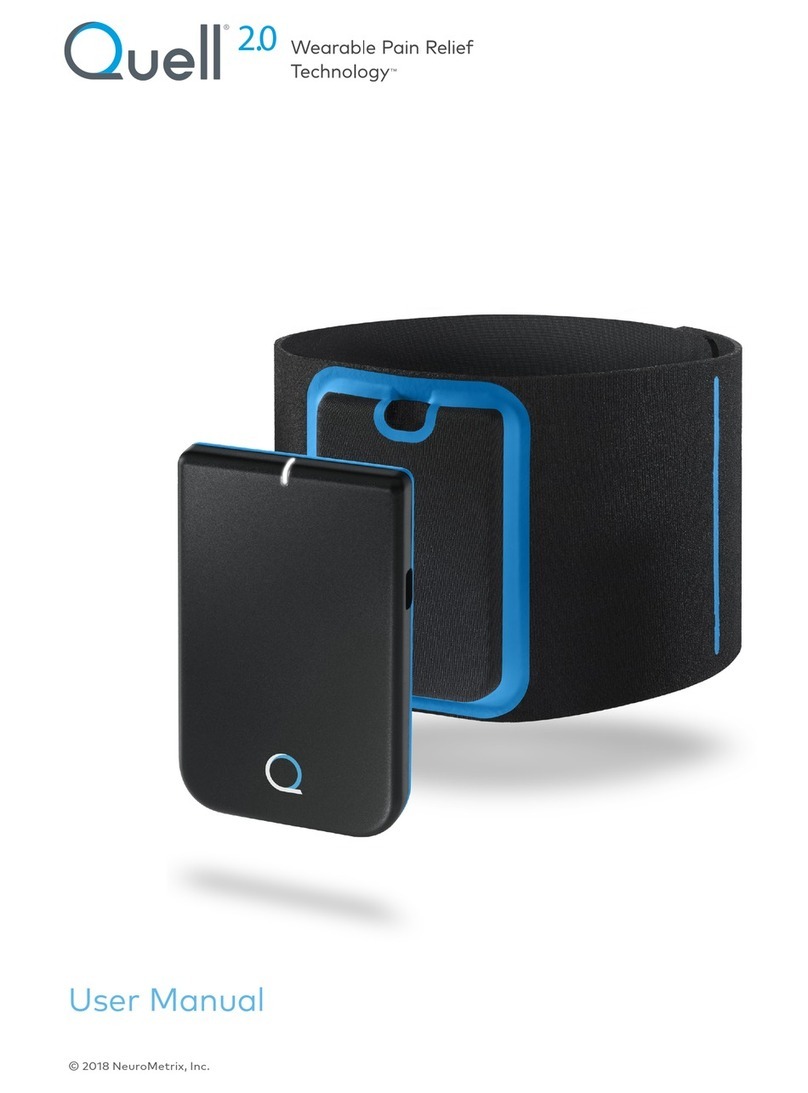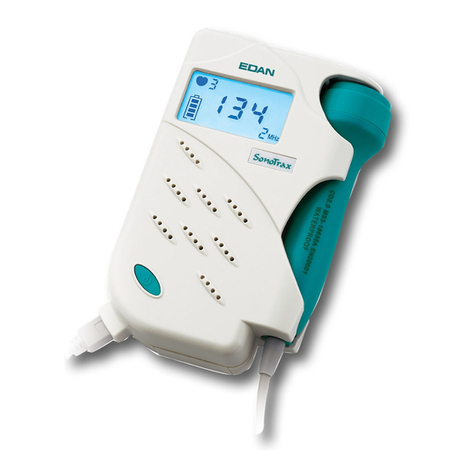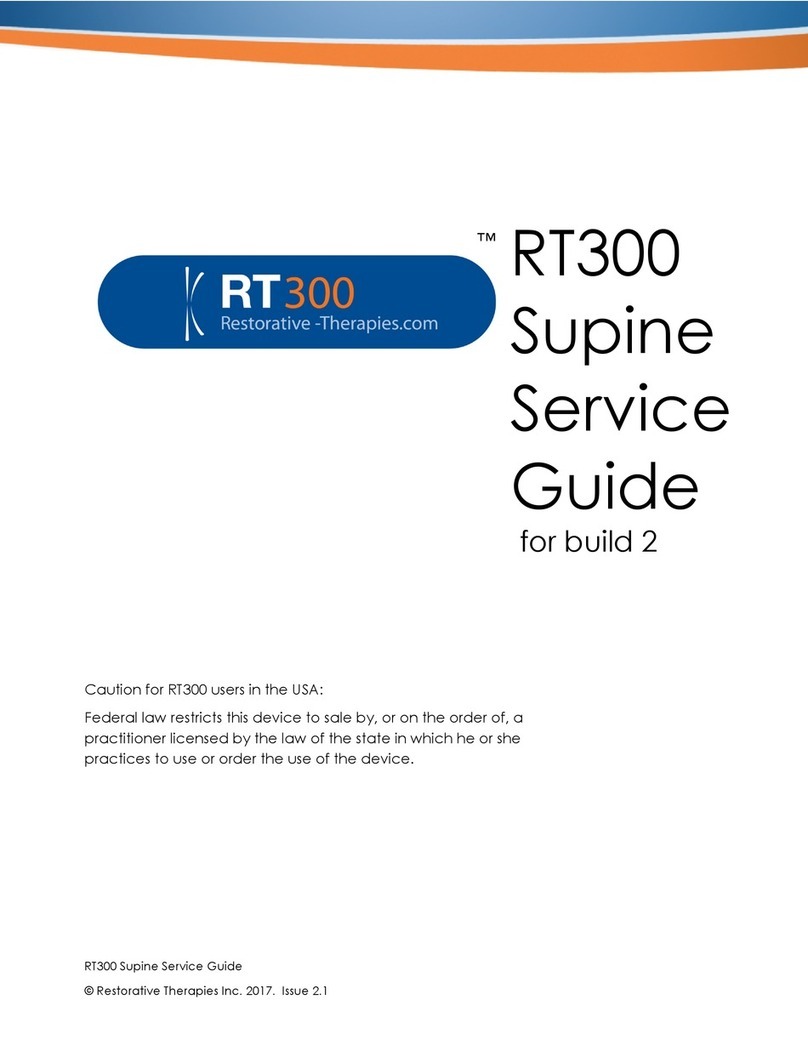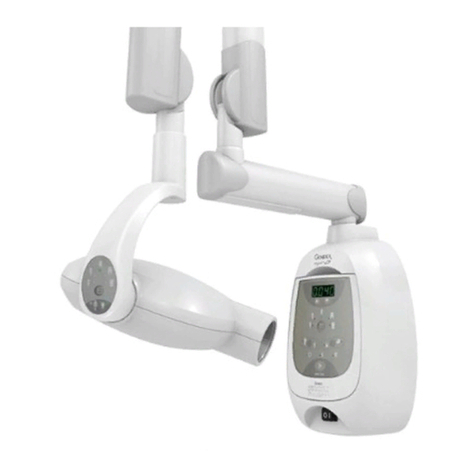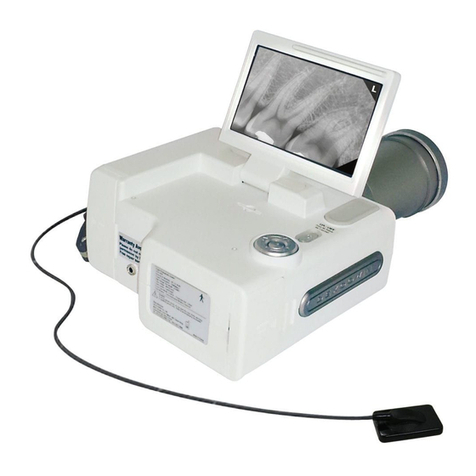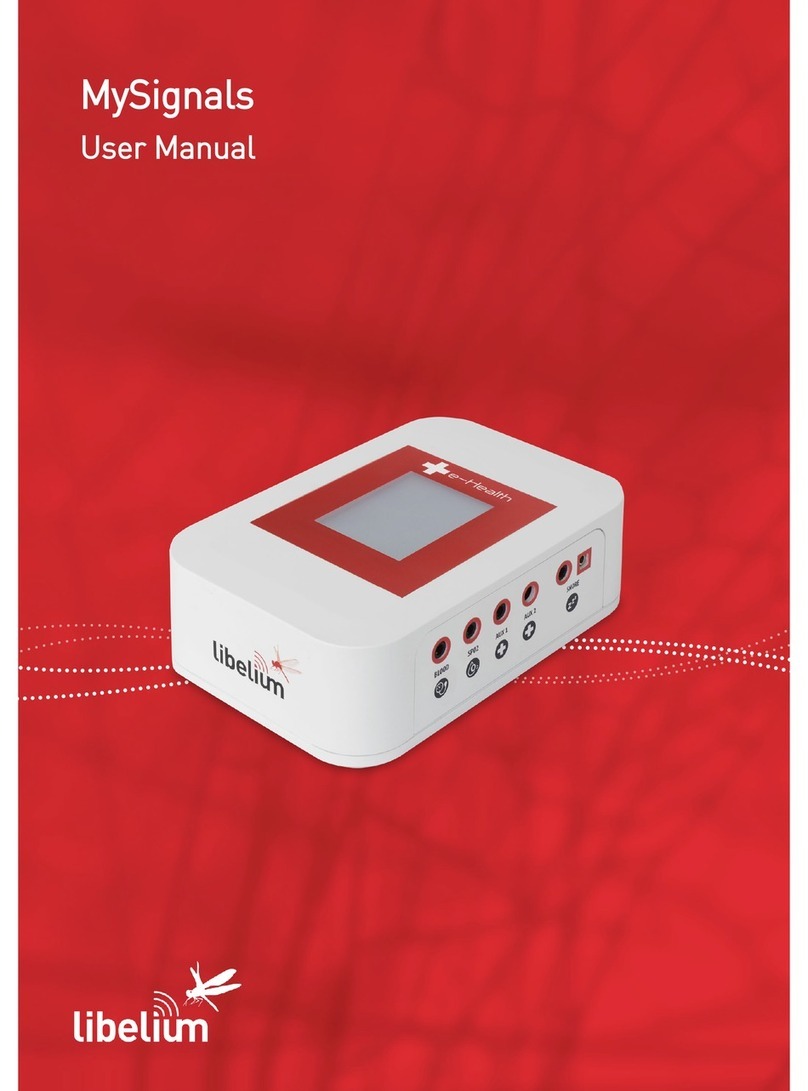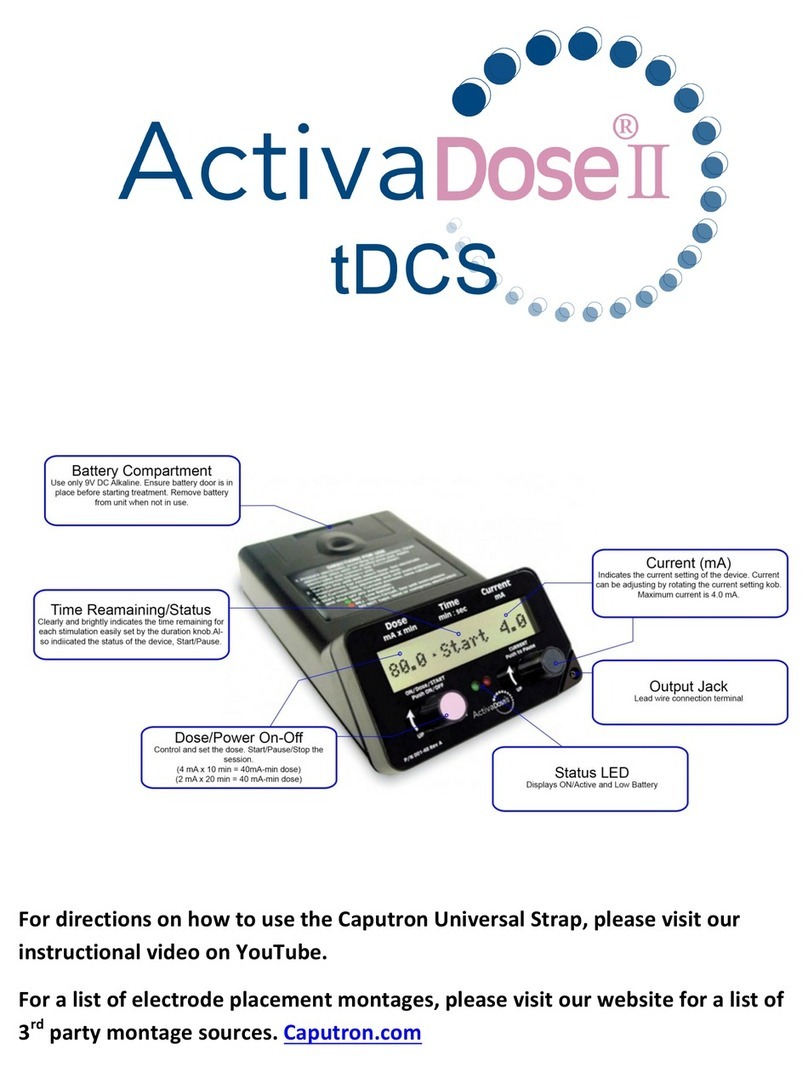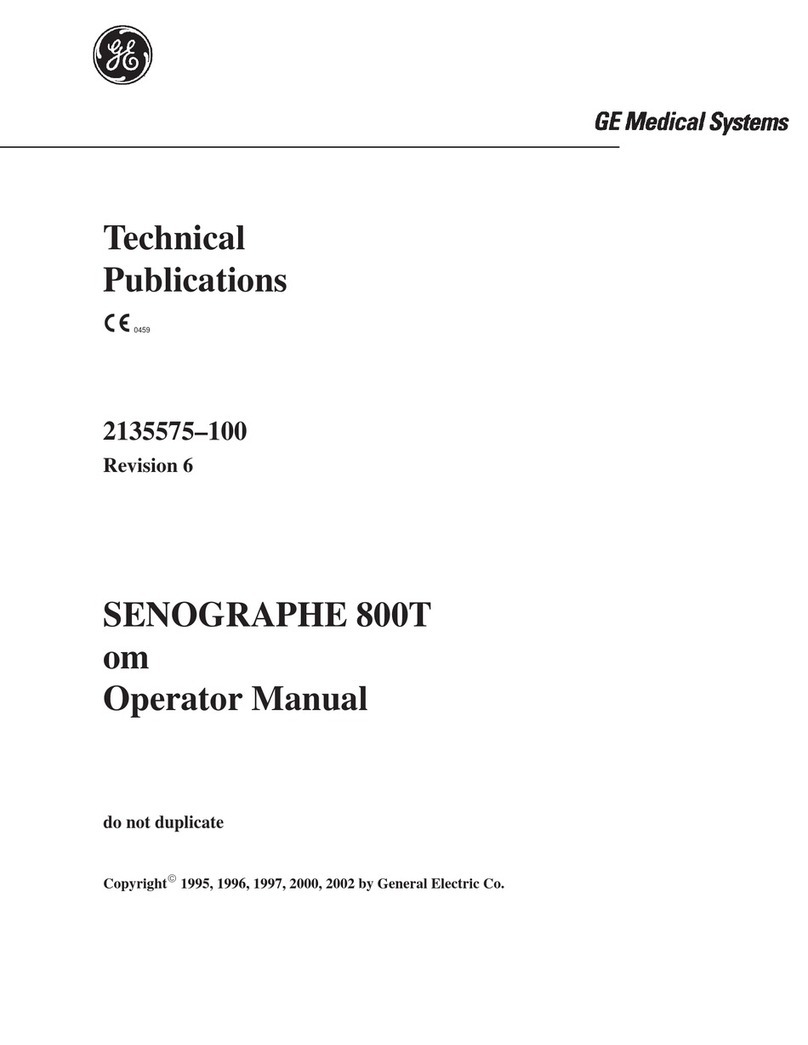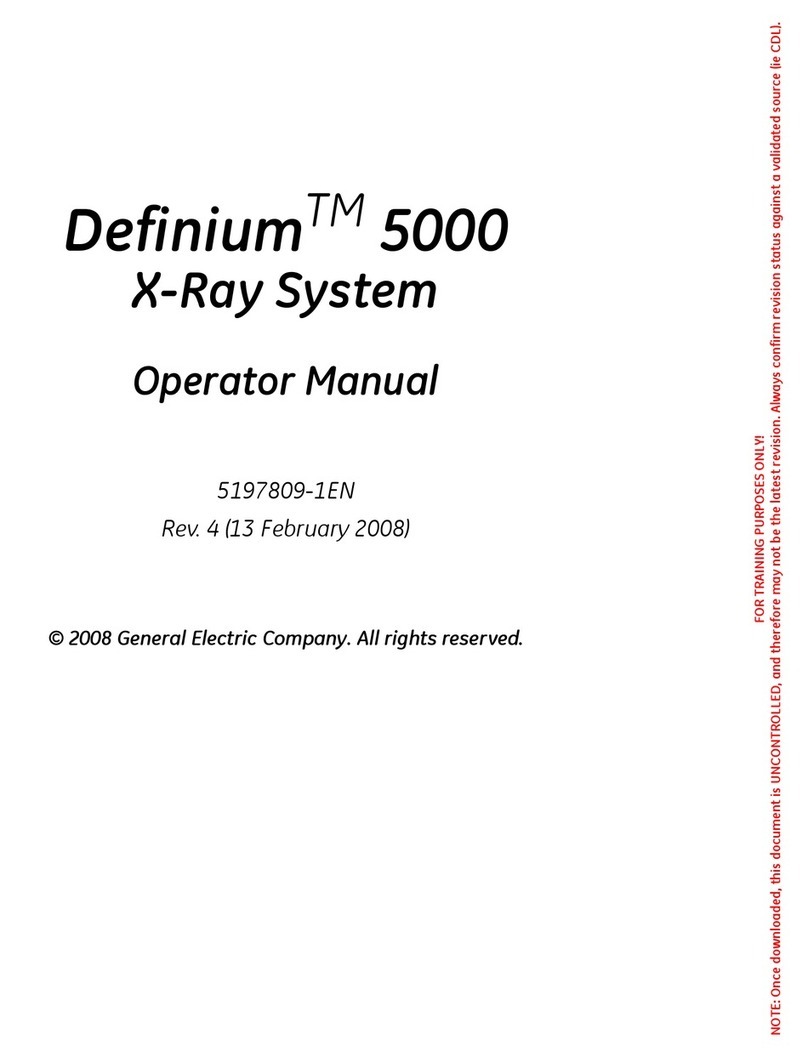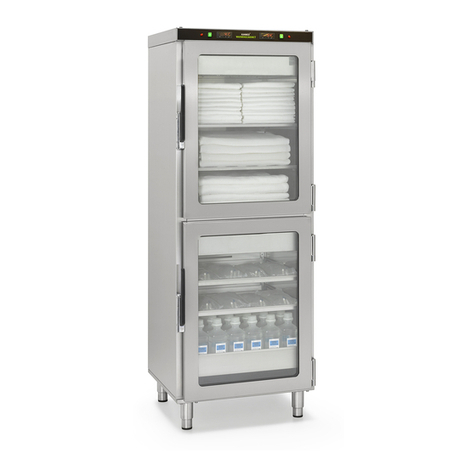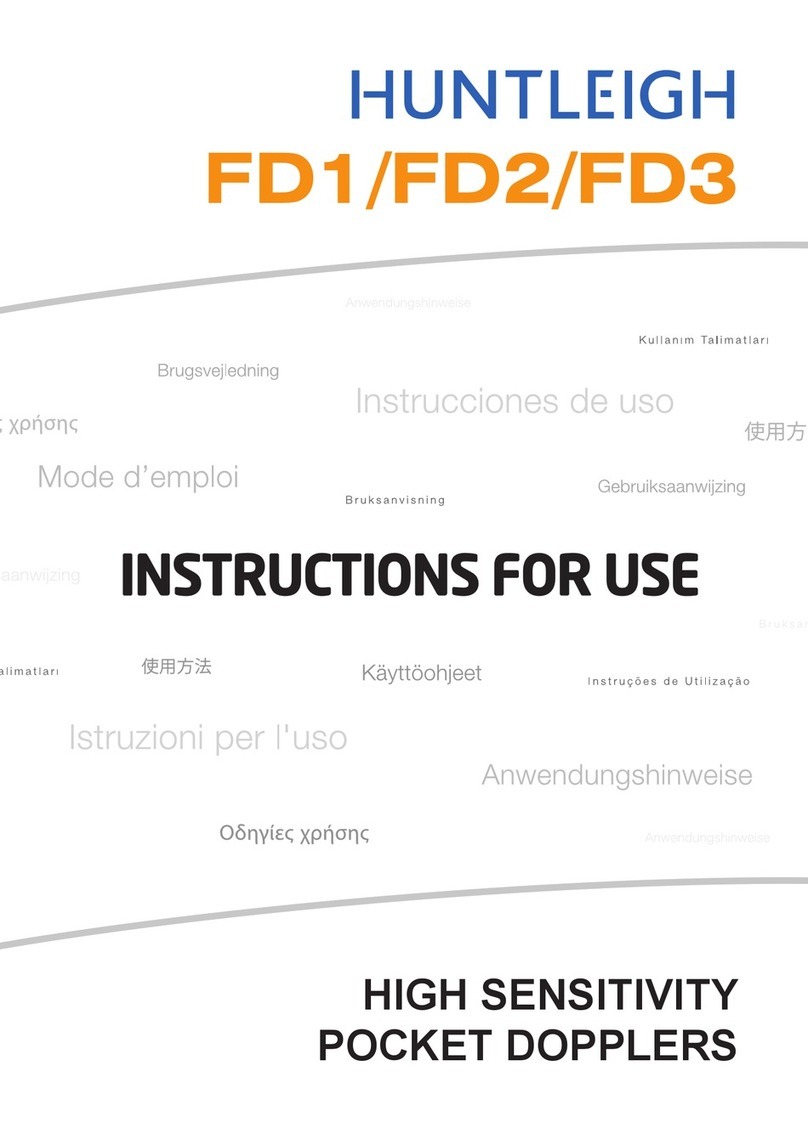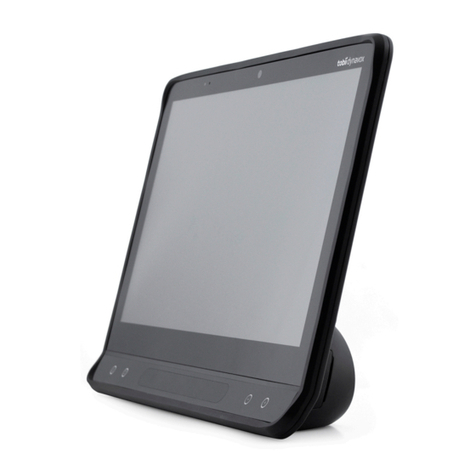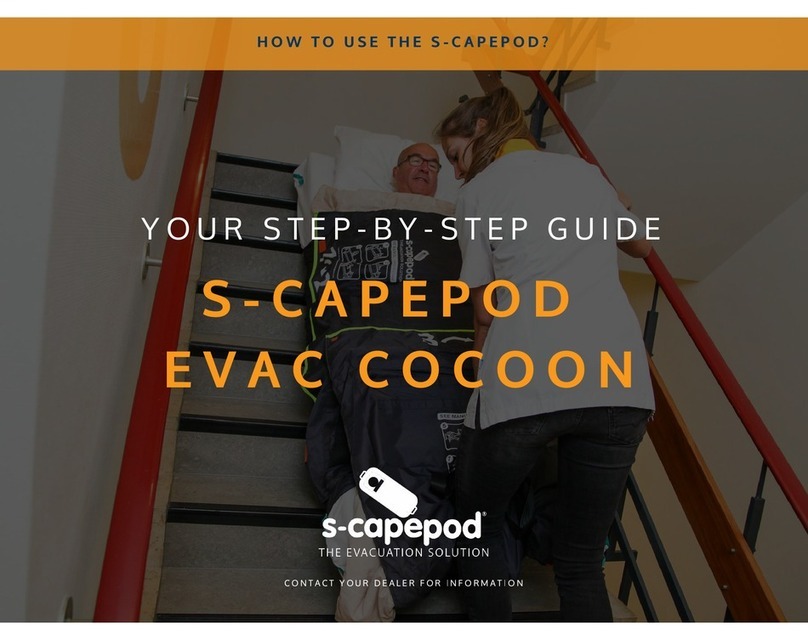
Summary of Safety Precautions
1--6
The following is a list of safety precautions that must be observed when operating or servicing this unit. The
precautions are repeated throughout the manual, where applicable. Carefully read this list before using or
servicing the unit.
WARNING
SImproper usage of the Cot can cause injury to the patient or operator. Operate the cot
only as described in this manual.
SAlways use all restraint straps to secure the patient on the cot. An unrestrained patient may fall fromthe
cot and be injured.
SSiderails are not intended to serve as a patient restraint device. Refer to pages 1--12 and 1--13 for proper
restraint strap usage. Failure to utilize the siderails properly could result in patient injury.
SNever leave a patient unattended on the cot or injury could result. Hold the cot securely while a patient
is on the cot.
SNever apply the optional wheel lock(s) while a patient is on the cot. Tipping could occur if thecot is moved
while wheel locks are applied, resulting in injury to the patient or operator and/or damage to the cot.
SWheel locks are only intended to help prevent the cot from rollingwhile unattended. Wheellocks may not
provide sufficient resistance on all surfaces or under loads.
SNever install or use wheel locks on a cot with excessively worn wheels. Installing or using wheel locks
on wheels with less than a 6” diameter could compromise the holding ability of the wheel lock, resulting
in injury to the patient or operator and/or damage to the cot or other equipment.
SBe sure the undercarriage has engaged and locked before removing the loading wheels from the patient
compartment floor of the vehicle. An unlocked undercarriage will not support the cot and injury to the pa-
tient and/or operator could result.
SDo not allow untrained helpers to assist in the operation of the cot. Untrained technicians/helpers can
cause injury to the patient or themselves.
SGrasping the Cot improperly can cause injury. Grasp only the lifting bars to lift the cot.
Keep hands, fingers and feet away from moving parts. To avoid injury, use extreme caution when placing
your feet near the base tubes while raising and lowering the cot.
SHave the vehicle safety hook installed by a certified mechanic. Improper safety hook installation can
cause injury to the patient or operator or damage to the unit.
SFailuretousethevehiclesafety hookcan causeinjurytothepatient oroperator. Installandusethesafety
hook as described in this manual.
SWhen the optional head end storage pouch is being used, ensure it does not interfere with the operation
of the safety bar and safety hook. Injury to the patient or operator could occur.
SDonotpullorlift onthesafetybarwhenunloadingthecot. Damagetothesafetybarcouldresultandinjury
to the patient or operator could occur.
SDo not modify the Cot. Modifying the cot can cause unpredictable operation resulting
in injury to the patient or operator. Modifying the cot will also void its warranty (see page 1--4).
SImpropermaintenancecancauseinjuryordamage totheunit. Maintainthecotasdescribedinthismanu-
al. Use only Stryker approved parts and maintenance procedures. Using unapproved parts and proce-
dures could cause unpredictable operation and/or injury and will void the product warranty.
SDo not ride on the base of the cot. Damage to the cot could occur, resulting in injury
to the patient or operator.
SFailure to properly clean or dispose of contaminated mattress or cot components will increase the risk of
exposure to bloodborne pathogens and may cause injury to the patient or the operator.
STo avoid accidental release of the Pedi--Matet, and possible injury to the infant, ensure the buckle is lo-
cated away from obstructions on the cot or head end storage pouch.
SOperating the cot with the breakaway head section lowered may cause injury to the patient or operator
or damage to the cot. Use only positions 5--7 when using this configuration.
